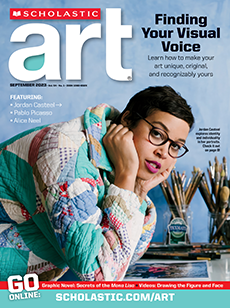Mark Rothko (1903-1970) was born in Dvinsk, Russia (now part of Latvia). His father, a pharmacist, sought a safer environment for his family. They moved to Portland, Oregon, when Mark was 10, but his father died soon after. Although he spoke only Hebrew and Russian, young Mark worked to support his family. He studied hard and received a scholarship to Yale University.
Then he moved to New York City, where he studied painting at the Art Students League. Rothko became an important part of the Abstract Expressionist movement that developed in the late 1940s. Also called the New York School, it included the most innovative artists of the time. While some of the Abstract Expressionists developed new styles based on gestures, Rothko and others created color field paintings. They used color and texture to convey emotion.
The title No. 12 emphasizes the work’s lack of figurative representation. The shallow pictorial space minimizes depth so that the rectangles appear to float just over the background. The soft edges of the rectangles lend a shimmering quality, making them appear to vibrate with the contrast of the analogous colors.
Rothko experimented with paint mixtures to achieve different saturations and hues. The oil paint in the orange background has so much turpentine that the paint is like a stain. For the yellow and reddish rectangles, in contrast, he used more oil to make the colors almost translucent. Subtle variations in the thin layers, fill each block of color with depth, complexity, and luminosity.
Rothko was not interested in abstraction for its own sake. He used the color fields to evoke emotional responses. “If you are only moved by color relationships, you are missing the point,” he explained. “I am interested in expressing the big emotions—tragedy, ecstasy, doom.” An avid student of mythology and philosophy, Rothko was interested in the interior life of the human psyche. He intended his paintings to be observed at close range, to envelop and transport the viewer.
